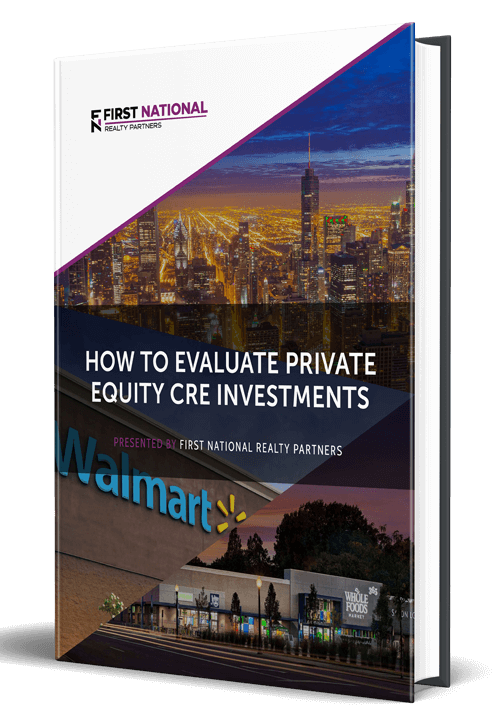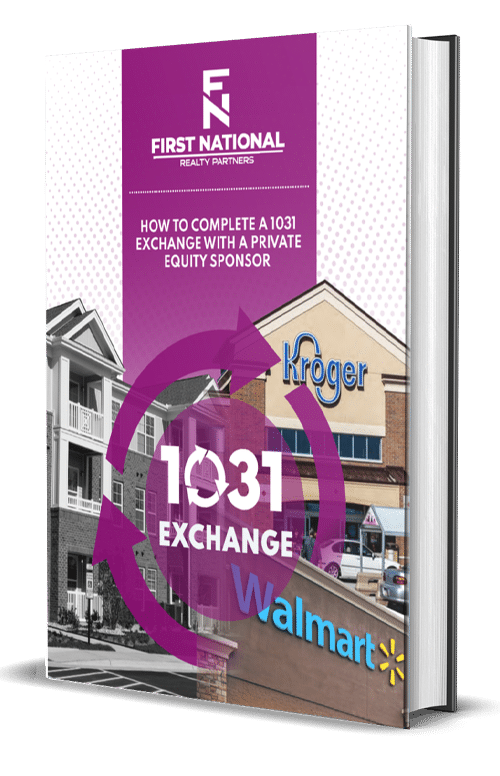Whether allocating money to an investment fund or to an individual deal, the terms and conditions of a private equity real estate investment are governed by a document called the “Private Placement Memorandum” or “PPM” for short.
Among other things, the PPM lays out two important aspects of the transaction:
- the fee(s) paid to the investment manager; and
- how income and profits generated by the underlying property are divided between the investment manager (sometimes called the Sponsor or General Partner) and the individual investors (sometimes referred to as the Limited Partners).
Investors not familiar with the typical language and deal structure outlined in a PPM may find it difficult to follow. Specifically, there are three commonly used terms: “waterfall”, “clawback”, and “catch-up,” that can be particularly confusing. Yet, a proper understanding of these terms is critical to assessing the risk profile and relative merits of a commercial real estate investment opportunity.
In this article, FNRP explains about the investment waterfall, including the American and European waterfalls, the clawback provision, and the GP catch-up clause.
First National Realty Partners helps you diversify your portfolio into commercial real estate backed by high-credit, national tenants. If you’re an accredited investor, click here to see how FNRP helps you invest in world-class, institutional-quality CRE deals.
“The Investment Waterfall”
The basic structure of a private equity commercial real estate transaction is such that there are two parties involved, the General Partner and the Limited Partner(s).
General Partner
The “General Partner” is the investment manager. They are responsible for identifying investment opportunities, arranging the financing, coordinating transaction logistics, and managing the property once purchased. In a typical deal, they will put in a small part of the total equity needed to finance the purchase, usually 10% – 20%.
Limited Partners
The other party is the “Limited Partners” or “LPs.” There may be one LP or many, but they are accredited investors who place their capital with the General Partner in the hope of earning a positive return. The Limited Partnership role is strictly passive and collectively, they contribute the difference between the total equity needed and the amount contributed by the General Partner, usually 80% to 90%.
Because the General Partner is responsible for managing the asset once the purchase is complete, a typical deal structure will incentivize them to deliver a high return to the Limited Partners. This is done by providing them with an increasing share of the property’s income and profits once certain hurdles are met. Colloquially, this return structure is known as a “waterfall.”
Equity Investment Waterfall Definition
By definition, an equity investment “waterfall” is the method used to allocate an investment’s income and profits between the General Partner and the Limited Partner(s). The exact methodology is described in the PPM, and it can vary widely from one deal to another. However, each waterfall has a number of features in common:
Preferred Return
As an incentive to invest, a General Partner may offer the Limited Partners a “preferred return,” meaning that they will receive the first claim on the property’s cash available for distribution until they have earned a certain return on their investment. For example, a deal may offer Limited Partners a preferred return of 8%, which means that they will receive 100% of the property’s cash available to distribute until they have earned a return of 8% on their investment.
Return Hurdles
A return hurdle is a point at which the cash flow split between the GP and the LPs changes. For example, a waterfall could be structured that the GP gets 10% of the cash flow available for distribution and the LP gets 90% until the LPs earn a return of 12% (the return hurdle). If the LPs earn more than 12%, the split changes so that the GP gets 20% and the LPs get 80%.
Return Hurdle Measurement
Depending on the deal, the return hurdle can be measured in a variety of different ways. Two popular methods are using the Internal Rate of Return or the Equity Multiple.
Example of a Typical Waterfall Structure
To illustrate how these features work together, consider the following example of a typical waterfall structure where the GP contributes 10% of the total equity needed and the LPs contribute the remaining 90%:

In this structure, when the Limited Partners earn between 0% and 8%, the cash flow split is “pro-rata,” meaning that the GP and LP shares, respectively, are the same as what each party originally contributed. But, if the LPs earn 8% on their investment, but less than 12%, the cash flow split changes so that the GP gets 20% and the LPs get 80%. This extra share is meant to incentivize the GP to deliver a strong return and it is known as a “promote.” Finally, in the last step, if the LPs earn more than 12% on their money, the cash flow split changes again so that the GP gets 30% and the LPs get 70%.
Types of Waterfalls in Private Equity Transactions
To further complicate matters, there are two types of waterfalls that could be used in a private equity transaction, the European Waterfall and the American Waterfall.
European Waterfall
In a European Waterfall structure, 100% of property cash flow is paid to the LPs on a pro-rata basis until the preferred return hurdle is met and 100% of LP capital is returned. Above the hurdle, the General Partner’s share of the income rises. This structure is commonly seen in private equity funds where investor capital may be deployed into multiple investments.
From an investor standpoint, the biggest advantage of the European Model is that the General Partner doesn’t get any profits until investor capital, plus their preferred return, is given back. The idea behind this structure is that the manager is incentivized to create a strong return, otherwise, they may not see any profits during the investment period.
The drawback of the European Model is that it may take many years for the General Partner to return investor capital and realize their share of the profits. As such, they may be incentivized to maximize short term profits to reduce the amount of time until they get paid, rather than focusing on creating long term value.
American Waterfall
The American Waterfall model addresses the primary weakness of its European counterpart – that it takes a long time for the General Partner to receive their management fees. In the American structure, the General Partner is entitled to their fee(s), regardless of whether or not investor capital has been completely returned.
The American waterfall structure benefits smaller private equity firms that don’t have the resources to wait many years for their fee and it benefits investors because it doesn’t incentivize the manager to sell an asset just to generate a return. Conversely, the downside to the American Waterfall is that while the investor is still due their return of capital, it may allow a manager/General Partner to take a performance fee, even if the deal underperforms.
Regarding waterfalls, the key point is this, the actual structure includes multiple variables and changes from one deal to the next. The details of the hurdles, splits, and other key terms are outlined in the Private Placement Memorandum (PPM) and it is absolutely critical to read it – and understand it – prior to making an investment decision.
“The Clawback Provision”
Another clause that may be outlined in the PPM is the “Clawback,” which is an investor-friendly provision that entitles the investor to be repaid for any incentive fees improperly paid to the manager. Whether it is the result of an accounting error or negligent behavior, if it is determined that the General Partner received a fee they shouldn’t have, a clawback provision allows the investor to seek its return.
It should be noted though, that a strong clawback provision doesn’t mean anything unless the General Partner has the ability to pay it. As such, it’s important to review the GP’s financial strength prior to making an investment decision.
“The GP Catch-Up Clause”
Finally, the private equity catch-up clause is a legal provision meant to compensate the General Partner (GP) based on an investment’s total return, not just the return in excess of the pre-established hurdle.
In practice, in a deal with a GP Catch-Up clause, the LP receives 100% of the property’s cash flow until their preferred return hurdle is reached. Above the hurdle, the manager/General Partner receives 100% of the income and profits until they are “caught up” to their performance fee.
Catch-Up Clause Example
To illustrate this concept, assume that the Limited Partners are entitled to a 10% preferred return and the General Partner is entitled to a 15% performance fee, with a catch-up provision. Here’s how property income/profits would be allocated:
- First, the LPs would get 100% of the income and profits until their 10% return hurdle has been reached.
- Next, the General Partner would get 100% of the income and profits until they’ve received the entirety of their 15% performance fee (the catch up)
- Lastly, any remaining funds would be split between the general and limited partners according to a predetermined schedule.
Summary & Conclusion
Investment waterfalls, clawbacks, and catch-up clauses determine how a property’s income and profits are split between the General and Limited Partners. The specifics of these clauses are laid out in the Private Placement Memorandum. The PPM is a document that potential investors should read in its entirety to ensure that they are comfortable with the risk profile and financial compensation involved with their capital contribution.
Interested in Learning More?
First National Realty Partners is one of the country’s leading private equity commercial real estate investment firms. With an intentional focus on finding world-class, multi-tenanted assets, including middle-market service-oriented retail shopping centers, well below intrinsic value, we seek to create superior long-term, risk-adjusted returns for our investors while creating strong economic assets for the communities we invest in.
To learn more about our investment opportunities, contact us at (800) 605-4966 or info@fnrpusa.com for more information.






